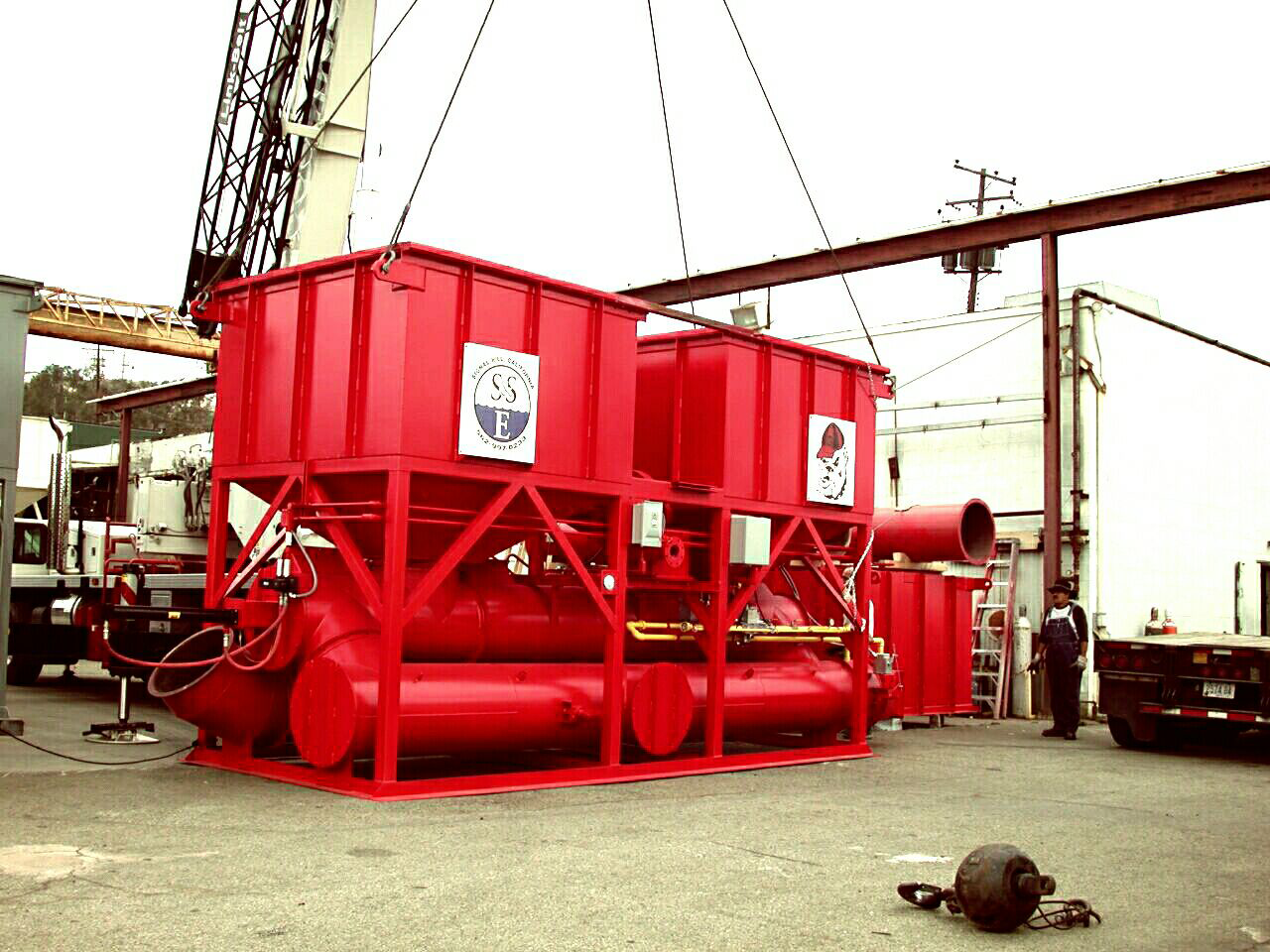
Comprehensive Startup and Shutdown Guide for Electric TOs
July 14, 2025 5:28 amUnderstanding the Crucial Role of Electric TOs
Welcome to our comprehensive Startup and shutdown guide for electric TOs. In today’s environmental landscape, the emphasis on minimizing emissions and improving energy efficiency has never been more critical. Thermal oxidizers (TOs) play an indispensable role in reducing harmful volatile organic compounds (VOCs) and hazardous air pollutants (HAPs). Recognizing their importance in maintaining air quality, our guide focuses on the seamless integration of startup and shutdown processes for these sophisticated systems.
Importance of Effective Startup and Shutdown Processes
An effective startup and shutdown process for electric TOs is not just a technicality – it’s a necessity for optimal performance and longevity. As systems that operate at high temperatures and involve complex mechanisms, how we initiate and conclude their operations can significantly impact their efficiency and safety. By adhering to best practices, we can ensure that our electric TOs function at their peak, minimizing downtime and securing consistent environmental compliance.
What this guide aims to bring: Simplifying Startup and Shutdown procedures
Our goal with this guide is to demystify the startup and shutdown procedures for electric TOs. We aim to provide clear, actionable steps that will help you navigate these processes with confidence. From pre-startup checks to post-shutdown considerations, our guide covers everything you need to know to handle thermal oxidizers effectively. This ensures that the startup and shutdown phases are not just routine but integral parts of your operational strategy.
Detailed Exploration of the Startup Process for Electric TOs
When initiating the Startup and shutdown guide for electric TOs, it is imperative to follow precise steps to ensure safety and efficiency. Initially, it is crucial to conduct a thorough inspection of all the system components. This includes checking for any signs of wear, ensuring all connections are secure, and verifying the integrity of sensors and control systems.
Once the inspection is complete, we must ensure that the power supply is stable and within the required parameters. Next, engage the primary circuit breakers to energize the system and activate the control panel. It is vital to watch the control panel for any error messages or system alerts that may indicate issues needing immediate attention. These initial steps are fundamental in preventing potential hazards and ensuring smooth operation.
After successful activation of the control panel, proceed with starting the auxiliary systems. Systems such as cooling fans and lubrication systems are critical to the overall health of the electric thermal oxidizers (TOs). Verify correct operation of these systems by monitoring their respective indicators and ensuring they function within normal parameters.
Insights into Safe and Efficient Shutdown Procedures
Shutting down electric TOs requires careful attention to avoid damage and ensure the safety of personnel. Begin the shutdown process by gradually reducing the load on the system. This step is essential to prevent sudden changes that can lead to mechanical stress or thermal shock.
Next, deactivate the auxiliary systems. Make sure to follow the reverse order of the startup sequence to allow for a controlled cooldown of components. For example, switch off any downstream processes that may rely on the TOs before deactivating the TOs themselves. Ensure that cooling and lubrication systems remain operational until the system temperature is within a safe range.
After the auxiliary systems are safely deactivated, proceed to cut off the main power supply. It is crucial to follow this sequence to maintain system integrity and extend the lifespan of the equipment. Once the TOs are powered down, conduct a thorough inspection to confirm that no components are left in a state that could lead to unintended hazards.
Best Practices and Common Mistakes to Avoid with Startup and Shutdown guide for electric TOs
To optimize the startup and shutdown processes, adhere to the following best practices:
- Always perform a pre-startup inspection to identify and rectify potential issues.
- Monitor the system consistently during startup to catch and address anomalies immediately.
- Follow the manufacturer’s guidelines for operational parameters and maintenance schedules.
- Ensure all personnel are trained and understand the procedures thoroughly before operating the system.
- Maintain detailed logs of each startup and shutdown cycle to track any recurring issues and facilitate preventative maintenance.
Conversely, avoid these common pitfalls:
- Skipping or rushing through the pre-startup inspection.
- Ignoring minor error messages on the control panel, which could indicate larger problems.
- Disregarding auxiliary systems’ importance during both startup and shutdown phases.
- Failing to allow the system to cool down properly before complete shutdown.
- Overlooking regular maintenance checks post-shutdown.
By adhering to these best practices and avoiding common mistakes, you can ensure the longevity of your electric TOs and maintain a high level of operational efficiency.
Did you know? Proper startup and shutdown of electric TOs can significantly reduce energy costs and extend equipment lifespan, contributing to both economic savings and environmental benefits.
Economic and Environmental Impacts of Properly Handling Electric TOs
At Ship & Shore Environmental, Inc., we firmly believe that effective startup and shutdown procedures are not just operational requirements; they are critical components with profound economic and environmental ramifications. Properly handling electric TOs (Thermal Oxidizers) enhances system longevity, reduces maintenance costs, and optimizes energy consumption, leading to significant cost savings over time. Moreover, well-executed procedures can substantially minimize harmful emissions, thereby contributing to a cleaner and healthier environment. These ripple effects underscore the importance of mastering the startup and shutdown guide for electric TOs.
Recap: The Role of Effective Startup and Shutdown Procedures
Revisiting the core objectives, our startup and shutdown guide for electric TOs is designed to streamline your operational processes. Effective startup protocols ensure that the system reaches optimal efficiency quickly and safely, avoiding potential hazards and unnecessary energy expenditure. Conversely, a structured shutdown process safeguards equipment integrity and prepares it for the next cycle of use, eliminating risks of accidental damage. When we adhere to these principles, we not only elevate our operational standards but also reinforce our commitment to sustainability.
Encouraging a Culture of Efficiency and Environmental Stewardship
As we wrap up, it’s essential to reflect on the broader implications of our actions. By fostering a culture that prioritizes efficiency and environmental stewardship, we pave the way for a future where economic success and ecological responsibility go hand-in-hand. Familiarizing ourselves with comprehensive procedures and leveraging innovative solutions such as total enclosures, we can achieve remarkable outcomes. Let’s embrace the knowledge imparted by the startup and shutdown guide for electric TOs and make a concerted effort to apply these practices in our daily operations.
FAQ
What are the benefits of a structured startup process for electric thermal oxidizers?
Implementing a structured startup process for electric TOs provides numerous advantages. Firstly, it ensures the thermal oxidizer reaches operational efficiency promptly, which is crucial for process effectiveness. Additionally, a well-defined startup minimizes the risk of equipment damage and safety hazards, ultimately leading to extended equipment lifespan and reduced downtime. Moreover, this approach conserves energy and reduces expenditure, thus supporting both economic and environmental objectives.
How does a proper shutdown procedure affect the longevity of an electric TO?
A proper shutdown procedure is paramount in protecting the integrity of electric thermal oxidizers. By following a precise shutdown sequence, you prevent thermal stress and mechanical wear on the system, which could otherwise lead to premature failures. Furthermore, a controlled shutdown ensures the TO is correctly prepared for its next operation, thus maintaining high performance and reliability over time. Consequently, appropriate shutdowns are a vital factor in maximizing the lifespan of the unit.
Can you outline some common mistakes to avoid during startup and shutdown?
Absolutely. During both startup and shutdown, neglecting to follow the manufacturer’s instructions is a prevalent mistake that can lead to operational inefficiencies and potential hazards. Additionally, overloading the system during the initial phase of startup, or hastily powering off without proper cooling during shutdown, can impose unnecessary stress on the equipment. Prioritizing patience and attention to detail while adhering to protocols can prevent these errors and ensure smooth operations.
What economic impact does efficient handling of electric TOs have?
Efficient handling of electric TOs has a notable economic impact on operations. Optimal management of the startup and shutdown phases reduces energy consumption and minimizes waste, leading to lower utility costs. Furthermore, these efficiencies decrease the need for maintenance and replacement parts, translating to substantial operational cost savings. Therefore, efficiency not only promotes sustainability but also drives cost-effectiveness within your organization.
How does proper operation of electric TOs contribute to environmental stewardship?
Proper operation of electric TOs plays a significant role in environmental stewardship. By maximizing operational efficiency and adhering to safe shutdown processes, we can decrease the generation of unnecessary emissions. Efficiently run TOs ensure that pollutants are effectively destroyed and greenhouse gas emissions are minimized. Through this commitment to responsible practices, we demonstrate our dedication to protecting the environment and supporting broader sustainability efforts.
Categorised in: Blog

